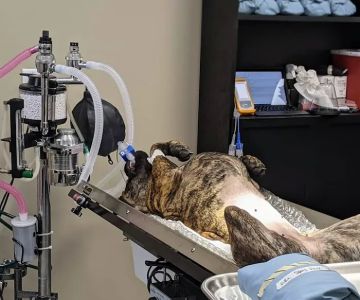- 3-Understanding-Dog-Body-Language
- 6-Professional-Advice-And-Resources
1. The Importance of Socializing a Dog with Other Dogs
Socializing your dog with other dogs is a fundamental part of their development that contributes to their happiness and well-being. Dogs that are well-socialized tend to be less anxious, more confident, and better behaved in group settings. This socialization helps prevent aggressive or fearful reactions when encountering unfamiliar dogs, creating safer and more enjoyable interactions for everyone involved.
Experts at Hidden Brook Veterinary emphasize that early and consistent socialization lays the foundation for a well-adjusted canine companion.
2. Essential Steps to Socialize Your Dog Safely and Effectively
Socializing a dog with other dogs involves a gradual and controlled process. Start by exposing your dog to calm and friendly dogs in a neutral environment. Keep initial meetings short and positive, rewarding good behavior with treats and praise.
As your dog grows more comfortable, increase the duration and variety of interactions, including visits to dog parks or organized playgroups. Patience and observation are key—never force your dog into situations where they feel overwhelmed.
3. Understanding Dog Body Language to Facilitate Positive Socialization
Recognizing the signals dogs use to communicate is crucial when socializing them with others. Signs of relaxation include wagging tails, play bows, and loose body movements. Conversely, growling, stiff postures, or raised hackles indicate discomfort or aggression.
By understanding these cues, you can intervene appropriately to ensure interactions remain friendly and safe, protecting your dog and others from negative experiences.
4. Overcoming Common Challenges in Socializing Dogs
Some dogs may display fear or aggression towards unfamiliar dogs, often due to past experiences or lack of early socialization. It’s important to address these behaviors gently and, if necessary, seek professional help.
Training techniques such as positive reinforcement, desensitization, and counter-conditioning can be effective. Hidden Brook Veterinary offers tailored behavioral consultations to guide owners through these challenges.
5. Real-Life Story: A Successful Dog Socialization Journey
Lucy, a rescued Labrador, initially showed signs of anxiety around other dogs. Her owner started slow, introducing Lucy to calm dogs and rewarding calm behavior. Over months, Lucy’s confidence grew, and she began to enjoy playdates at local parks.
This story exemplifies how patience, understanding, and the right approach can transform a nervous dog into a social butterfly.
6. Professional Advice and Resources for Dog Socialization
Veterinarians and animal behaviorists recommend beginning socialization as early as possible, ideally during puppyhood. Regular socialization throughout a dog’s life maintains their social skills.
For ongoing support, consult experts like those at Hidden Brook Veterinary, who provide educational resources, training workshops, and behavior assessments to assist dog owners.
7. Enhancing Socialization with the Right Products and Services
Specialized tools such as gentle training collars, calming sprays, and interactive toys can facilitate positive socialization experiences. Additionally, enrolling your dog in group training classes or socialization groups under professional supervision offers structured opportunities for learning.
Explore Hidden Brook Veterinary for recommended products and services that support your dog’s social development and overall health, helping create joyful, confident canine friendships.











